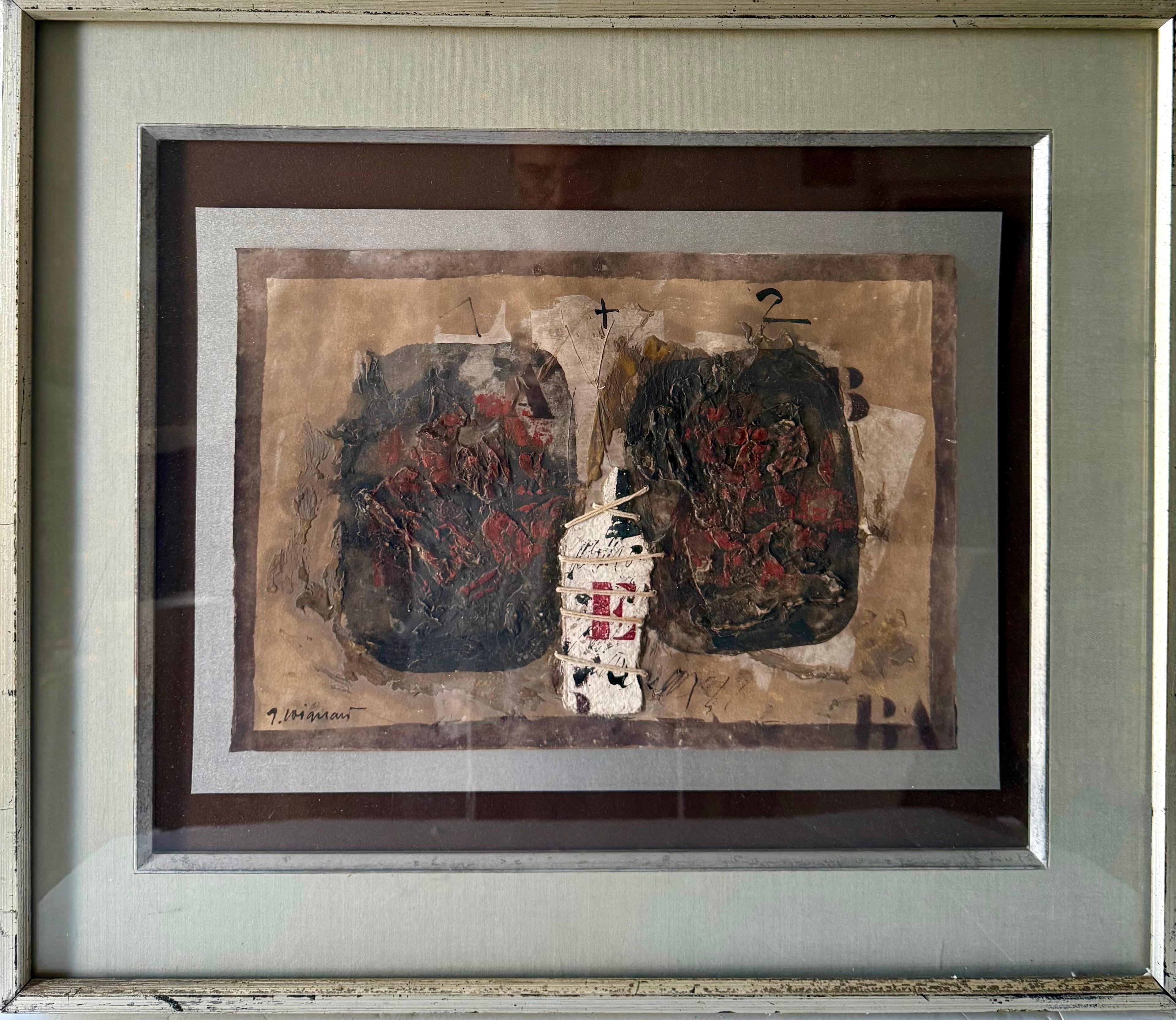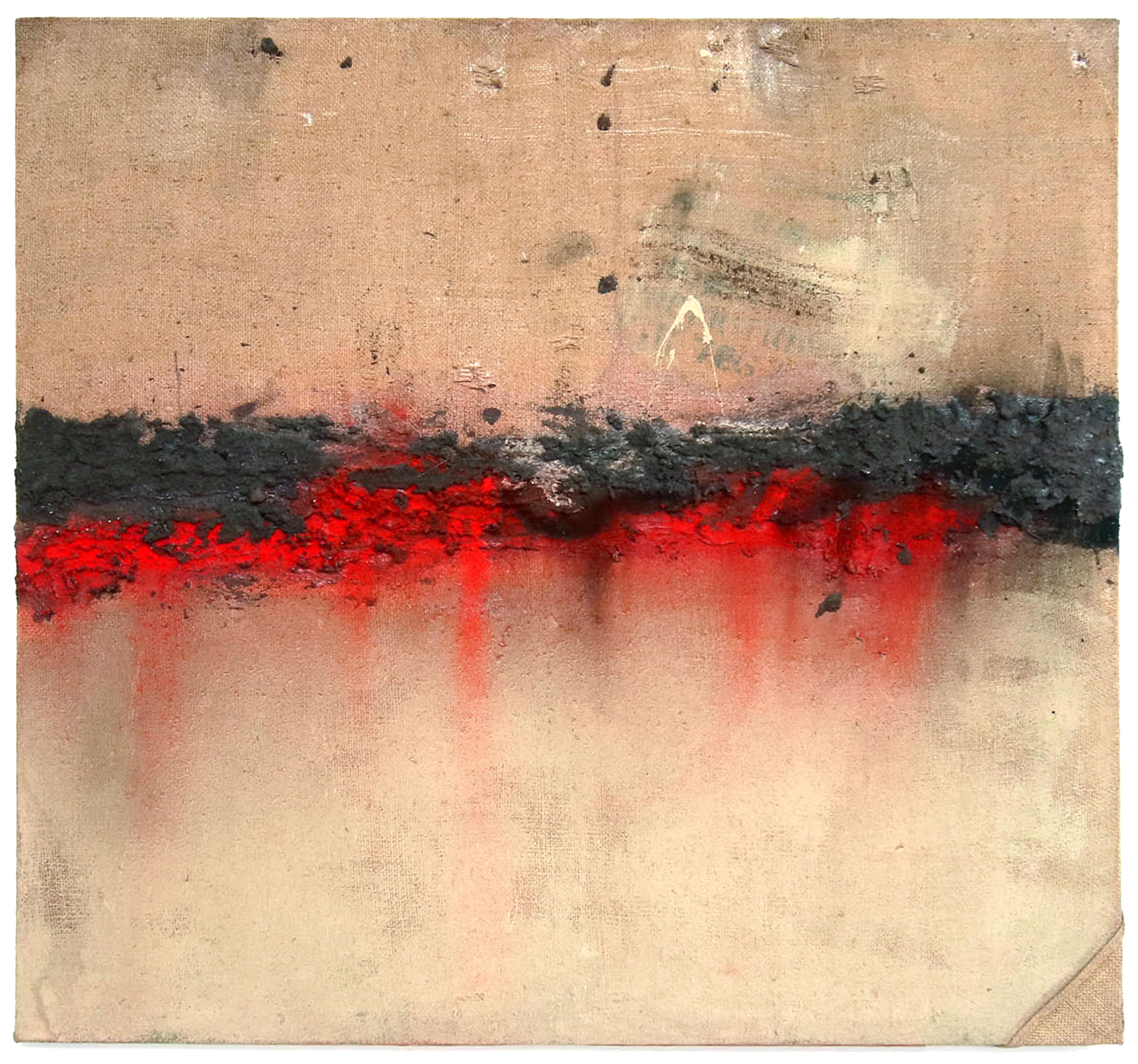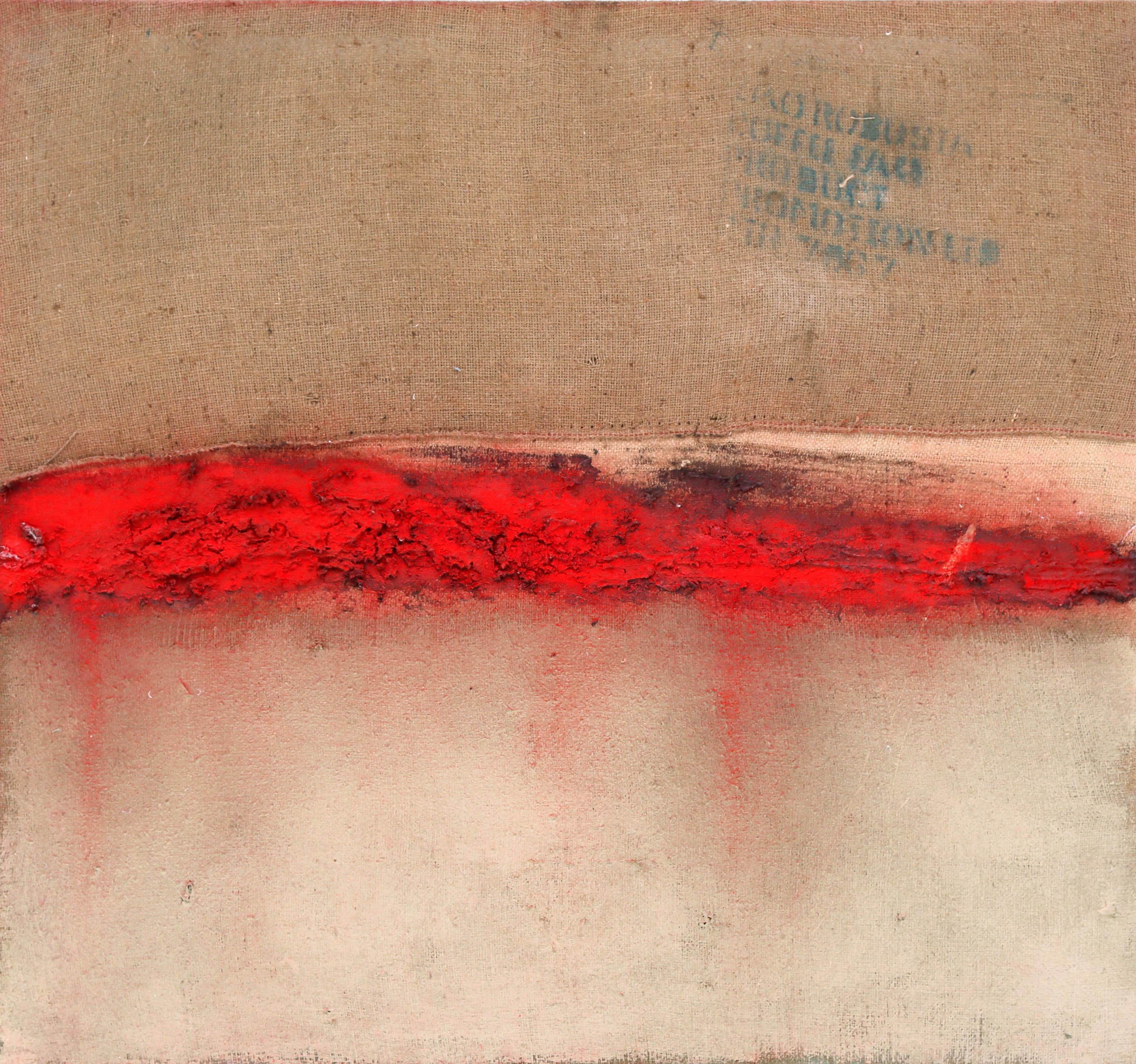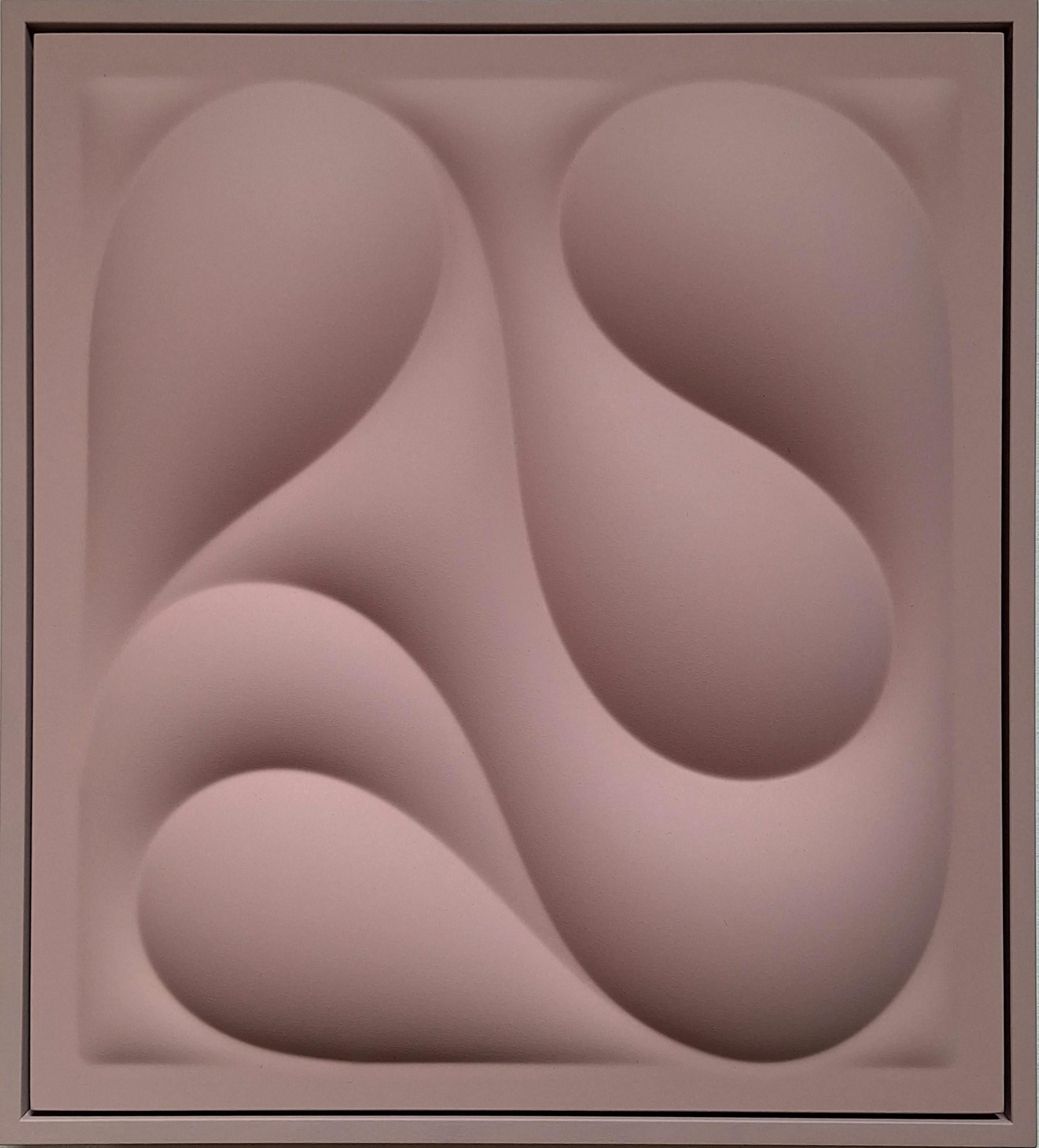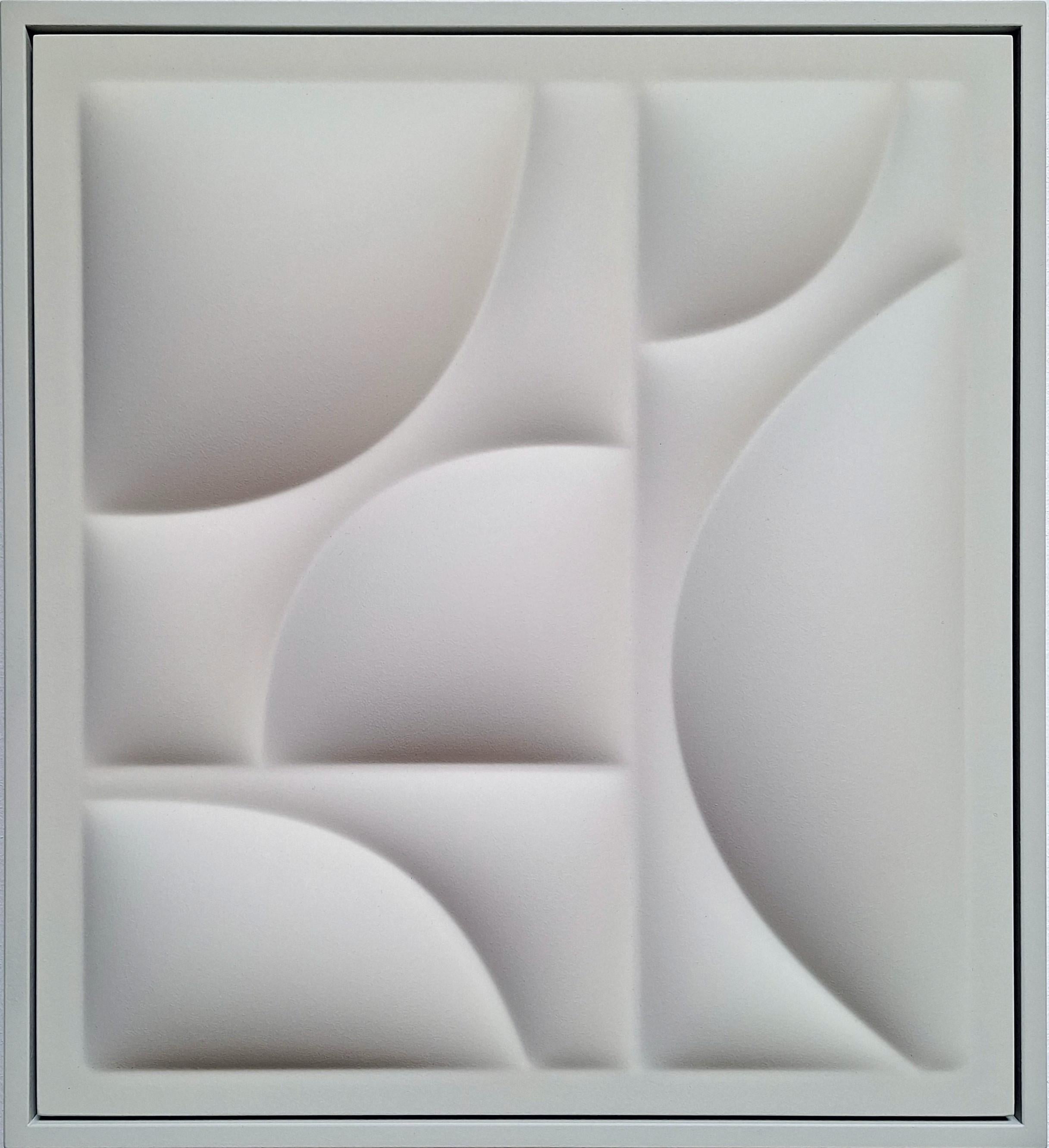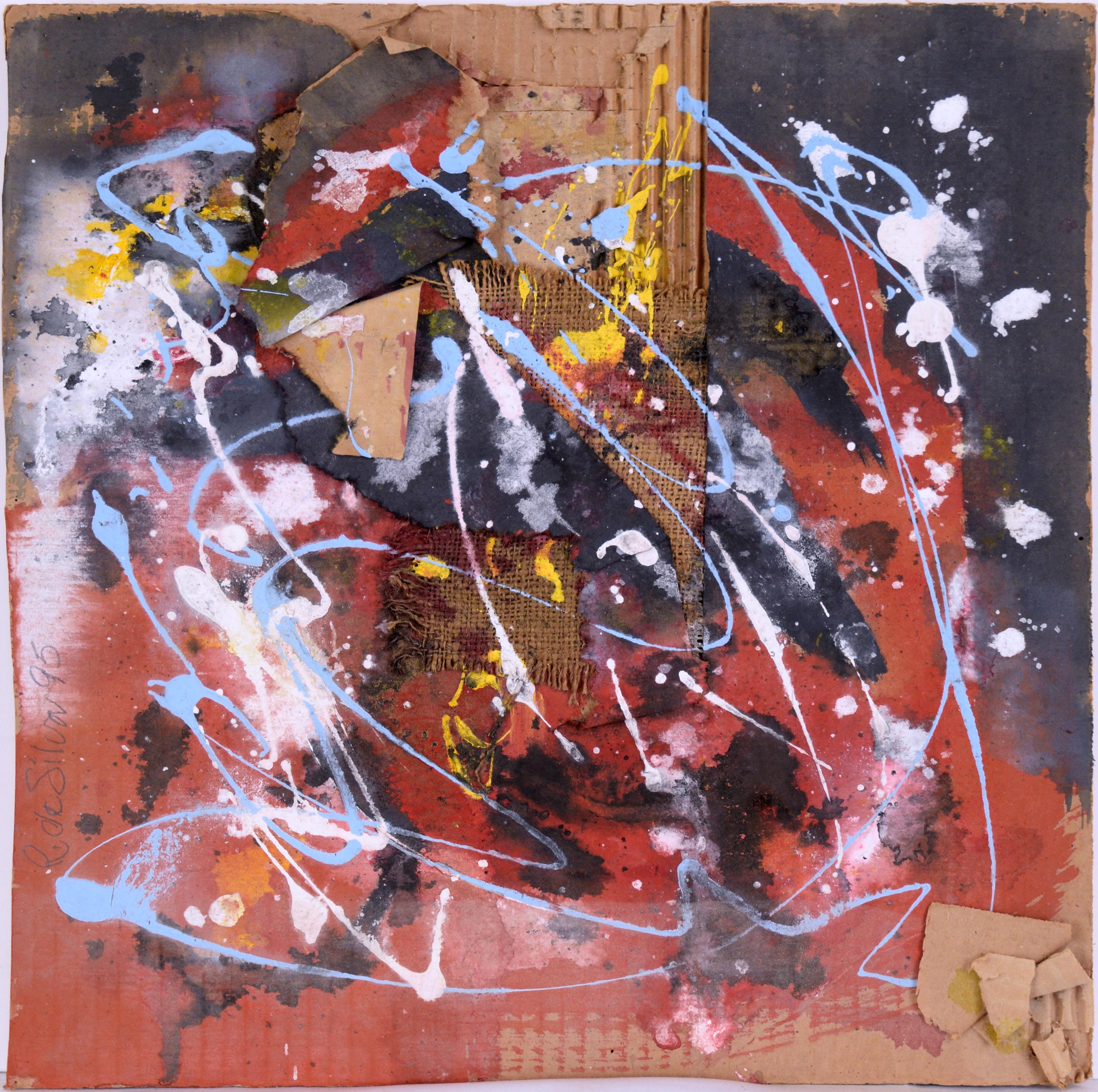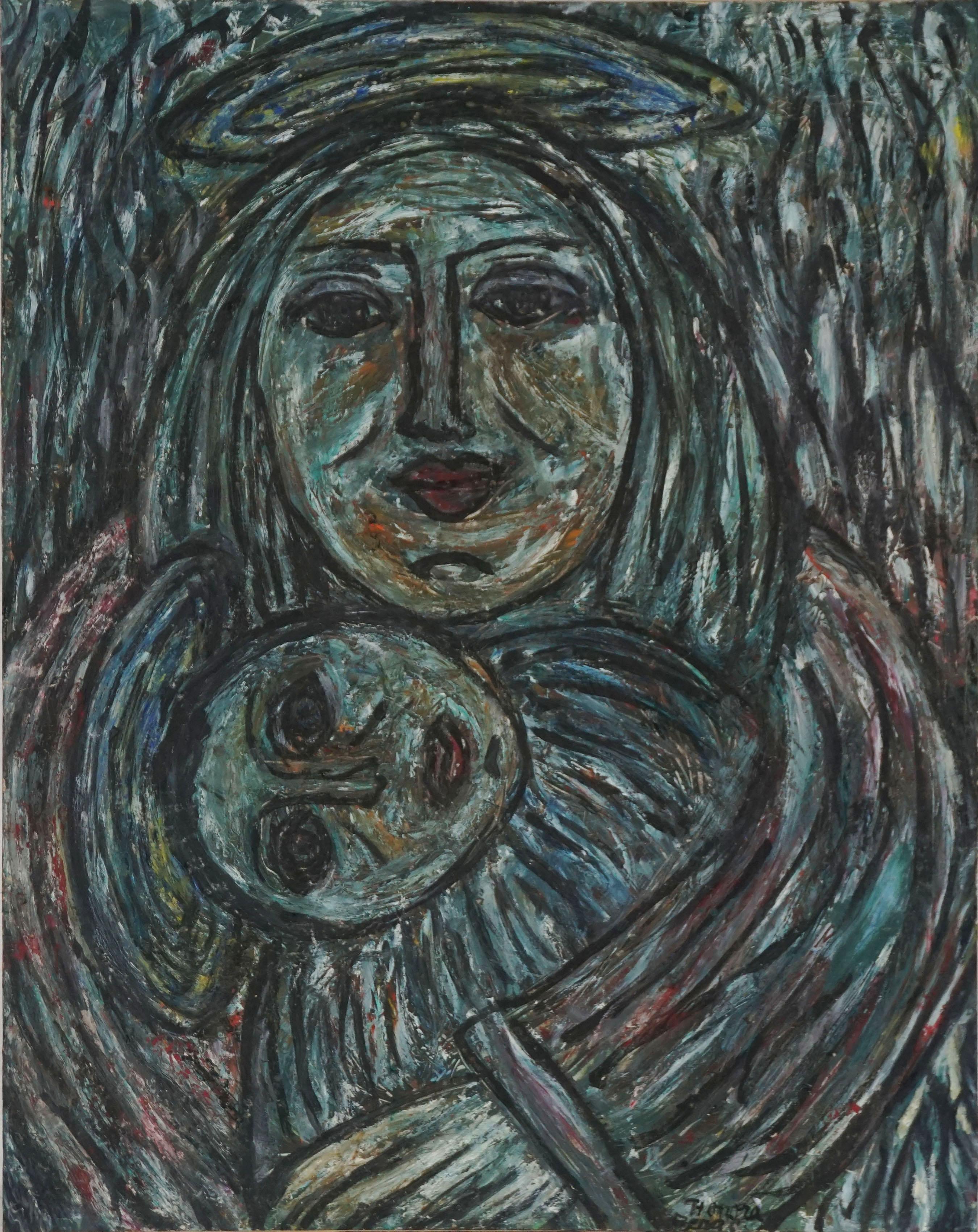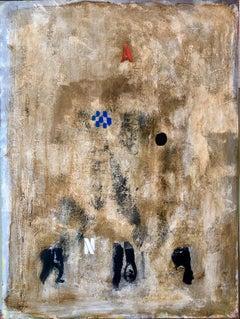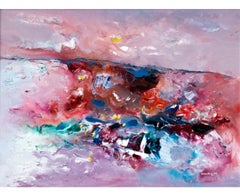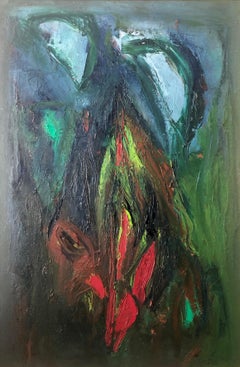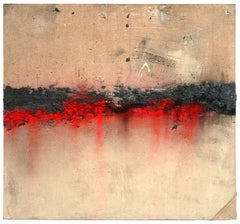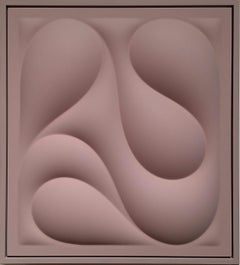
French Pop Art Modernist Textured Painting Abstract With Stencilled Letters
View Similar Items
Want more images or videos?
Request additional images or videos from the seller
1 of 10
James CoignardFrench Pop Art Modernist Textured Painting Abstract With Stencilled Lettersc.1960s
c.1960s
$4,500List Price
About the Item
- Creator:James Coignard (1925-2008, French)
- Creation Year:c.1960s
- Dimensions:Height: 24.75 in (62.87 cm)Width: 28.75 in (73.03 cm)
- Medium:
- Movement & Style:
- Period:
- Condition:good. piece is well protected by frame. frame and mat have wear. size includes frame.
- Gallery Location:Surfside, FL
- Reference Number:1stDibs: LU3824698232
James Coignard
James Coignard, painter, ceramist, sculptor and etcher, was born in Tours in 1925. At the age of 23 and after a brief career in the French administration, he discovers the landscapes of the French Riviera and decides to study at Arts décoratifs in Nice. Four years later, he quits his job at the administration to commit himself entirely to his artistic career. The encounter with Paul Hervieu in 1950 is decisive. His collaboration with gallery Hervieu made him known in artistic circles, nationally and internationally and then particularly in Scandinavia. At the beginning of his career, art critics label James Coignard as a member of Ecole de Paris. Soon, his painting and ceramic distances themselves from those of his colleagues and he goes it alone. At the beginning of the sixties, he starts to work with glass but the technical turning point occurs in 1968 when his friend Henri Goetz discovers a new etching technique, using carborundum. Etching then becomes central in his work. At the same time, his career takes off internationally. He travels a lot, especially to Sweden and USA where he lives during a few years. 1978, James Coignard participates in the creation of the etching studio Pasnic, with which he starts a long collaboration. During the eighties, he shares his time between Paris and the French Riviera and takes an interest in artist’s books and publishing issues. He exhibits now all over the world, and is acknowledged as one of the greatest painter-etchers of his time. Until his decease in 2008, James Coignard was a prolific painter, sculptor and etcher and leaves behind an immense work.
About the Seller
4.9
Platinum Seller
Premium sellers with a 4.7+ rating and 24-hour response times
Established in 1995
1stDibs seller since 2014
1,782 sales on 1stDibs
Authenticity Guarantee
In the unlikely event there’s an issue with an item’s authenticity, contact us within 1 year for a full refund. DetailsMoney-Back Guarantee
If your item is not as described, is damaged in transit, or does not arrive, contact us within 7 days for a full refund. Details24-Hour Cancellation
You have a 24-hour grace period in which to reconsider your purchase, with no questions asked.Vetted Professional Sellers
Our world-class sellers must adhere to strict standards for service and quality, maintaining the integrity of our listings.Price-Match Guarantee
If you find that a seller listed the same item for a lower price elsewhere, we’ll match it.Trusted Global Delivery
Our best-in-class carrier network provides specialized shipping options worldwide, including custom delivery.More From This Seller
View AllFrench Pop Art Modernist Textured Painting Abstract With Stencilled Letters
By James Coignard
Located in Surfside, FL
This is a mixed media abstract painting collage with string, plaster texture, stencilled letters in a bold typeface. Size includes frame.
James Coignard was born in Tours, France in...
Category
20th Century Post-War Abstract Paintings
Materials
Jute, Mixed Media, Oil, Board
French Pop Art Modernist Textured Painting Abstract With Stencilled Letters
Located in Surfside, FL
This is a large mixed media abstract painting with stencilled letters in a sans serif typeface in blue and red.
it is in the manner of James Coignard but does not appear to be signed...
Category
20th Century Post-War Abstract Paintings
Materials
Mixed Media, Acrylic, Board
Large Colorful Abstract Expressionist Oil Painting Modernist Beach Landscape
By Ralph Rosenborg
Located in Surfside, FL
Ralph Rosenborg (American, 1913-1992) "American Landscape, Sky and Shore, 1973"
Oil on canvas. Signed 'Rosenborg' (lower right). Titled (verso).
30 x 40 in
Ralph Rosenborg (1913–199...
Category
1960s Abstract Expressionist Abstract Paintings
Materials
Canvas, Jute, Oil
Large Colorful MCM Abstract Expressionist Oil Painting Modernist Ralph Rosenborg
By Ralph Rosenborg
Located in Surfside, FL
Ralph Rosenborg (American, 1913-1992) Mountain Weed with Two Clouds, oil on jute canvas, canvas is hand signed recto and verso, artists label and Snyder Fine Art gallery label, The p...
Category
1960s Abstract Expressionist Abstract Paintings
Materials
Canvas, Jute, Oil
Abstract Expressionist Landscape Israeli Modernist Oil Painting, Moody Blue
By Shimon Avny
Located in Surfside, FL
Shimon Avni
Shimon Avny, painter, born 1932, Paris
Shimon Avny (Stein) was born in Paris, France. He grew up in the Belville neighborhood. In 1942, when the Nazis occupied France, he was separated from his family. His mother and brothers were killed in the Holocaust. After the war, he was transferred from his hiding place to the town of Andlis. He immigrated to Israel with Youth Aliyah in 1948. In 1956, he joined Kibbutz Ra'im. In 1957, he studied painting with Joseph Zaritsky, Avigdor Stematzky and Haim Kiewe. He also studied with Yehezekel Streichman at the Avni Institute. At the end of the 1950s, he went to Paris to continue his studies. In the 1980s, he joined the Radius artists cooperative.
Avny's early work was influenced by the abstractionism of the New Horizons group. In 1963, he took part in the group's exhibition at Ein Harod. His work is characterized by bold colors, expressive brushstrokes and flat planes. He is a figurative painter, but some of his work incorporates symbolic imagery.
Education
1957 Painting with Joseph Zaritsky, Avigdor Stematsky and Haim Kiewe
Avni Institute, Tel Aviv, with Yehezkel Streichman
Grande Chaumiere Academy, Paris, 1958
Ecole des Beaux Arts, Paris, 1961
Fine Arts Academy, Rome
Photography and television, Paris, 1965-67
Teaching
Lectured abroad for the Ministry of Education and Culture, 1969-71
Bezalel Academy, Jerusalem, painting, 1974-78
College of Visual Arts, Beersheba, 1975-81
Headmaster of the Art Institute, Rehovot, 1975-85
1981-85 and 1988-92 Art Teachers College, Ramat Hasharon
Since1992 Avni Institute, Tel Aviv, Teacher and coordinator of the Arts Department
Awards And Prizes
1975 The America-Israel Cultural Fund Scholarship
1985 Scholarship, The Cité Internationale des Arts, Paris, France
1993 The America-Israel Cultural Foundation, Sharett Fund Scholarship for a Young Artist.
A member of the Aclim Group, which was organized in 1974. The group was established in the wake of the Yom Kippur War to point to the necessity of raising the public's consciousness of its Israeli identity in all cultural spheres. Participants in the group's exhibitions until 1983 were: Eliyahu Gat, Rahel Shavit, Ori Reisman, Avram Rafael, Michael Gross, Hannah Levy...
Category
Mid-20th Century Abstract Expressionist Abstract Paintings
Materials
Jute, Oil
Large Modernist Geometric Abstract Painting
By Gregg Robinson
Located in Surfside, FL
Gregg Robinson, American (born 1948) "Cipher Bar 19" Oil on Canvasboard Panel. Artist signed, title and dated 1990 far right. Very minor rubbing to paint. Panel measures 15-1/4" H x 63-1/2" W, frame measures 24-1/4" H x 72-1/4" W
GREGG ROBINSON
The universe of visual art encompasses a huge spectrum of motivation and means of expression. Examples range from the most syrupy sentimentality to extremes of moral and intellectual confrontation. For me, the creative process is, on the simplest level, an aesthetic puzzle. Elements of the puzzle include contrast, color, visual texture, graphic pattern, and in some recent work, a simple cryptic symbolism.
I have never been particularly interested in lyric or pictorial content, and though some of my work does contain undeniable spatial illusion, even that tends to be a by-product rather than a goal of the primary pursuit: the balance of light and dark, pure color and organic neutrals, energy and calm, strong pattern and subtle field. Having grown up in an environment of contemporary architecture, I have always valued the classic modern synthesis of form and function exemplified by the Bauhaus movement of the early 20th century. Hence, the simplest solutions are often the most satisfying. Obviously, the modernist ideal of efficiency in form and function requires that method of execution be as well adapted to the aesthetic goal as the visual language itself.
The media before you is the result of many years of experimentation that came to its current form in early 1992. I work with dry pigment over a plaster surface. My tools are broad knives, sponges, rags and masking. The finish is a high gloss alkyd resin.
CORPORATE COLLECTIONS:
Allstate Insurance
NBC Productions
Alaska...
Category
1990s Contemporary Abstract Paintings
Materials
Canvas, Mixed Media, Oil, Board
You May Also Like
THE WAY 2 - Mixed Media Painting On Jute Canvas, Abstract Artwork, Large Format
By Marta Pokojowczyk
Located in Salzburg, AT
„The Way 2”, mixed media (soil, pearl glue, oil, powder pigment, rosin) on jute, 140 x 150, 2012
Series “The Way” by Marta Pokojowczyk contains mixed media paintings on jute created...
Category
2010s Contemporary Figurative Paintings
Materials
Jute, Glue, Mixed Media, Oil, Pigment
THE WAY 4 - Mixed Media Painting On Jute Canvas, Abstract Artwork, Large Format
By Marta Pokojowczyk
Located in Salzburg, AT
„The Way #4”, mixed media (soil, pearl glue, oil, powder pigment, rosin) on jute, 140 x 170, 2012
Series “The Way” by Marta Pokojowczyk contains mixed media paintings on jute create...
Category
2010s Contemporary Figurative Paintings
Materials
Jute, Glue, Mixed Media, Oil, Pigment
THE WAY 6 - Mixed Media Painting On Jute Canvas, Abstract Artwork, Large Format
By Marta Pokojowczyk
Located in Salzburg, AT
„The Way #6”, mixed media (soil, pearl glue, oil, powder pigment, rosin) on jute, 140 x 150, 2012
Series “The Way” by Marta Pokojowczyk contains mixed media paintings on jute create...
Category
2010s Contemporary Figurative Paintings
Materials
Jute, Glue, Mixed Media, Oil, Pigment
Containment 2491 - abstract geometric contemporary modern painting relief
Located in Doetinchem, NL
Containment 2491 is a unique one-of-a-kind contemporary modern painting relief by Dutch artist Sander Martijn Jonker. His reliefs are made by creating a unique single-use mould in wh...
Category
2010s Contemporary Abstract Paintings
Materials
Jute, Resin, Acrylic, Fiberboard
Collected Parts 2491 - abstract geometric contemporary modern painting relief
Located in Doetinchem, NL
Collected Parts 2491 is a unique one-of-a-kind contemporary modern painting relief by Dutch artist Sander Martijn Jonker. His reliefs are made by creating a unique single-use mould i...
Category
2010s Contemporary Abstract Paintings
Materials
Jute, Resin, Acrylic, Fiberboard
Jute Nebula - 3D Abstract Expressionist Mixed Media on Cardboard
Located in Soquel, CA
Jute Nebula - 3D Abstract Expressionist Mixed Media on Cardboard
Abstract in bold red, yellow and sky blue on a soft black background, by California-based artist Ricardo de Silva (B...
Category
1990s Abstract Expressionist Abstract Paintings
Materials
Acrylic, Burlap, Jute, Cardboard
